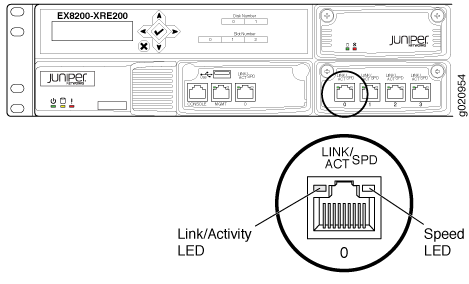- Related articles
- Optical Transceivers for Cisco WS-C2960+24PC-L Switch
- All Cisco DS-SFP-FC4G-LW's information (List price, Specs, Datasheet PDF, Compatibility ma
- Optical Transceivers for Cisco IE-2000-16TC-G-X Switch
- Optical Transceivers for Cisco WS-C3650-48TD-S Switch
- Optical Transceivers for Cisco SG355-10P-K9-UK Switch
- Difference between XENPAK and GBIC
- All Cisco CWDM-GBIC-1510's information (List price, Specs, Datasheet PDF, Compatibility ma
- Optical Transceivers for Cisco WS-C3750E-24PD-S Switch
- Optical Transceivers for Cisco N7K-F348XP-25= Switch
- All Cisco ONS-GC-GE-LX's information (List price, Specs, Datasheet PDF, Compatibility matr

Definition:
In computer networking, Gigabit Ethernet (GbE or 1 GigE) is a term describing various technologies for transmitting Ethernet frames at a rate of a gigabit per second (1,000,000,000 bits per second), as defined by the IEEE 802.3-2008 standard. It came into use beginning in 1999, gradually supplanting Fast Ethernet in wired local networks, as a result of being considerably faster. The cables and equipment are very similar to previous standards and have been very common and economical since 2010.
What is a Gigabit Ethernet port used for:
Gigabit Ethernet is part of the Ethernet family of computer networking and communication standards. The Gigabit Ethernet standard supports a theoretical maximum data rate of 1 gigabit per second (Gbps) (1000 Mbps). When first developed, some thought achieving gigabit speeds with Ethernet would require using fiber optic or other special network cable technology. The 1000BASE-X cabling standards support Ethernet over fiber. However, today's Gigabit Ethernet works well using twisted pair copper cable (specifically, the CAT5e and CAT6 cabling standards) similar to older 100 Mbps Fast Ethernet (that works over CAT5 cables). These cable types follow the 1000BASE-T cabling standard.
What is a Gigabit Ethernet Wan Port:
The WAN port is for your Wide Area Network which is just a long name for the ethernet cable port that you plug your internet modem into. The LAN port is for devices on your Local Area Network. Just remember your modem goes in the WAN port and everything else that isnt wireless goes into one of the LAN ports. Though there's no commonly-agreed precise cutoff point between a LAN and a WAN, a WAN tends to use "external" cabling such as a phone network or a cable company's fiber optic network. Unlike a LAN, a WAN is usually owned and operated by a different organization to the people and organizations that use the network to send and receive data.
What is a Gigabit Ethernet Lan Port:
A local area network is one where all the computers are in the same general location. This can mean all in the same office or building, or in a group of nearby buildings. The key is that these computers are usually connected by a single cable, a small collection of cables or a local Wi-Fi connection. This setup means the networks tend to have fast connection speeds allowing for quick data transfers.
Conclusion:
Gigabit Ethernet, a transmission technology based on the Ethernet frame format and protocol used in local area networks (LANs), provides a data rate of 1 billion bits per second (one gigabit). Gigabit Ethernet is defined in the IEEE 802.3 standard and is currently being used as the backbone in many enterprise networks. Gigabit Ethernet is carried primarily on optical fiber (with very short distances possible on copper media). Existing Ethernet LANs with 10 and 100 Mbps cards can feed into a Gigabit Ethernet backbone. An alternative technology that competes with Gigabit Ethernet is ATM. A newer standard, 10-Gigabit Ethernet, is also becoming available.
Please click to check more related concepts:
| Ethernet standard | IEEE standard | Speed |
| 1000Base-X | ||
| 1000BASE-T |






















































